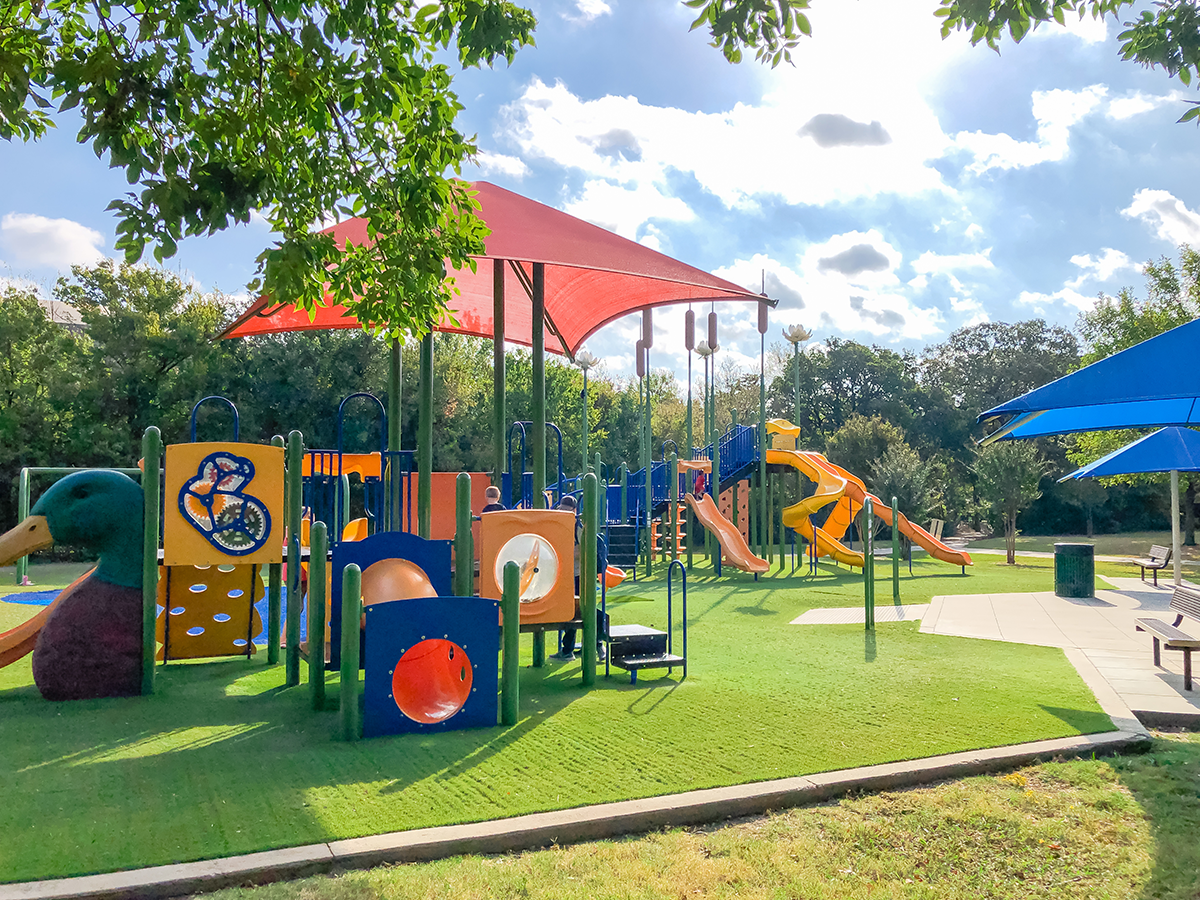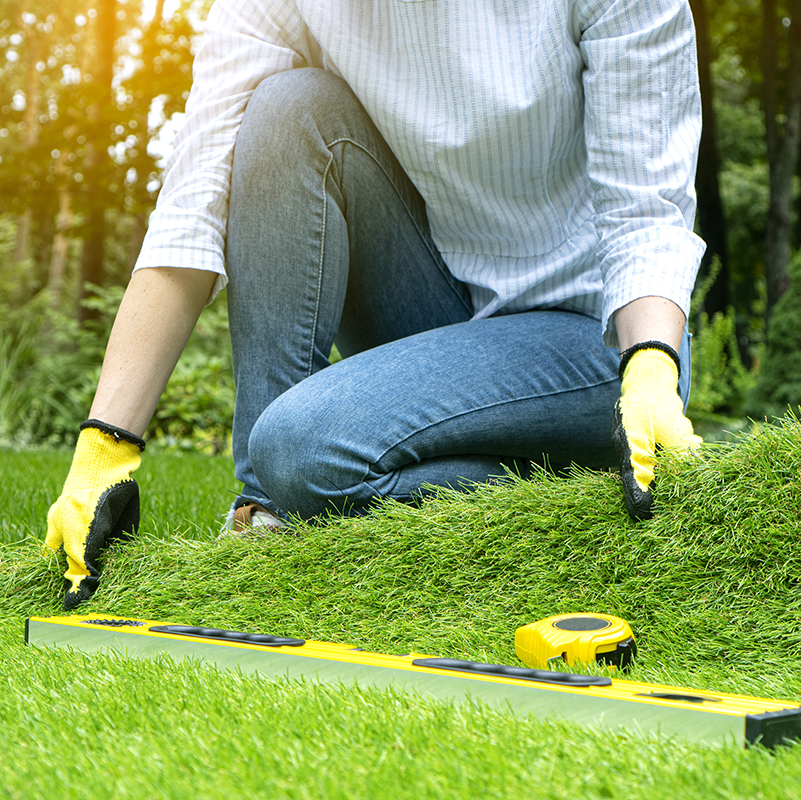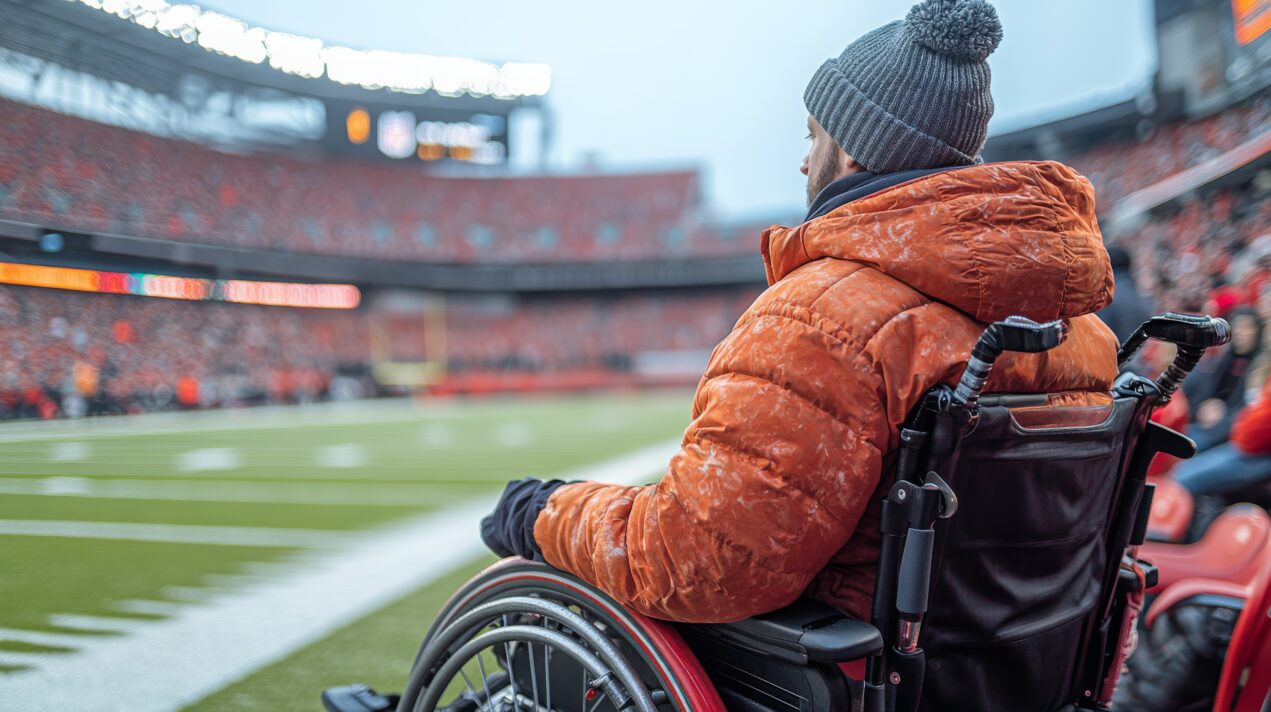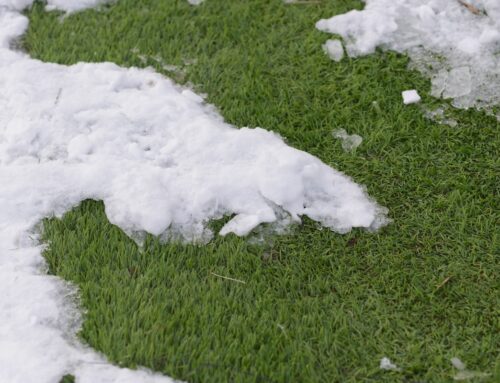Last Updated on March 31, 2025 by ReTurf
The Americans with Disabilities Act (ADA) sets legal standards to ensure that public spaces are accessible to people with disabilities. When artificial turf is used in areas such as parks, playgrounds, schools, or recreational trails, property owners and project managers often ask whether it complies with ADA guidelines. While artificial turf can meet accessibility requirements, it does not automatically do so just by being installed. Several specific conditions must be met for turf to be considered ADA-compliant.
This article breaks down what the ADA requires, how artificial turf systems fit within those expectations, and what design, installation, and maintenance factors must be addressed to ensure compliance.
Understanding ADA Requirements
The ADA is a civil rights law that prohibits discrimination based on disability. When applied to the built environment, the law ensures that people with mobility impairments, vision impairments, and other disabilities can use and navigate public and commercial spaces safely and independently. This includes outdoor areas such as:
-
Playgrounds
-
Recreational fields
-
Sidewalks and pathways
-
Outdoor event venues
-
Schoolyards and common areas

The ADA is enforced through building codes, inspection processes, and civil litigation. Compliance is measured by standards established in the ADA Accessibility Guidelines (ADAAG), which address everything from slope and ground firmness to changes in surface height and ease of mobility. For surfacing materials like artificial turf, the key points of concern are:
-
Surface firmness and stability
-
Slip resistance
-
Change in level or transitions
-
Maneuverability for wheelchairs or mobility devices
Artificial turf can meet these standards, but only when specific design choices and quality controls are in place.
Surface Firmness and Stability
According to the ADA, walking surfaces must be firm, stable, and slip-resistant. For artificial turf, this standard does not focus on the appearance of the surface but on how it performs when in use. A compliant turf surface should allow a person using a wheelchair or walker to move across it without getting stuck, tipping, or exerting excessive force. That means:
-
The turf should not compress too deeply when weight is applied
-
It should not shift or bunch underfoot or under wheels
-
Loose infill should not create drag or resistance to movement
The firmness of an artificial turf system is largely determined by the base material, the density of the turf fibers, and how the surface is anchored. A professionally installed base using compacted crushed stone or another stable foundation layer is essential. This not only supports the weight of users and equipment but also minimizes long-term settling or unevenness that could develop over time.
Additionally, the type of infill matters. Some surfaces use rubber crumb, sand, or a blend of materials to hold the fibers upright and provide cushioning. However, if the infill is too loose or too deep, it may interfere with maneuverability. For ADA purposes, infill should be compact enough to resist wheel drag while still providing some give for comfort.
Slopes and Transitions
Another factor the ADA addresses is the slope of the surface. Turf installed on a flat or gently sloped surface can meet these standards, but it must follow clear thresholds:
-
Running slope: no more than 1:20 (5%)
-
Cross slope: no more than 1:48 (2%)
These limits are intended to ensure that a person using a wheelchair or mobility device can travel across the area without assistance. Turf systems must be graded carefully during installation so that water drains properly without exceeding the slope requirements. If the underlying base is improperly shaped or if the turf wrinkles or shifts after installation, it may violate ADA guidelines even if the material itself is suitable.
Transitions between turf and other surfaces—such as concrete walkways, poured-in-place rubber, or natural grass—must also be smooth and free of abrupt changes in level. According to ADAAG, any vertical change greater than ¼ inch must be beveled, and anything over ½ inch typically requires a ramp or transition structure. This is particularly important where turf meets curbing, edging, or other hardscape elements. A misaligned edge or sudden drop can create a tripping hazard or make it difficult for mobility devices to pass through.

Testing for Compliance
It is not enough to rely on manufacturer claims or product specifications to ensure ADA compliance. Actual field testing is recommended to confirm that an installed turf system meets accessibility standards. One of the most commonly used tests for firmness and stability is the Rotational Penetrometer Test, which measures the amount of force required to rotate a standard device on the surface. This test is often conducted in line with ASTM F1951, a standard that evaluates the accessibility of surfaces for mobility devices.
Passing the ASTM F1951 test is a good indicator that a turf product can meet ADA requirements, but passing the test in a lab is not the same as passing it in a real-world installation. Site-specific factors such as weather exposure, use over time, and maintenance practices can all influence long-term compliance. For this reason, regular inspections and re-testing may be needed, particularly in high-traffic areas.
Playground Considerations
Playgrounds are one of the most common places where artificial turf is used in areas subject to ADA scrutiny. In these settings, turf must provide both accessibility and impact attenuation to reduce injury risk. That means the turf system must also meet ASTM F1292, which relates to critical fall height—the maximum height from which a child can fall without sustaining a serious head injury.
To meet both ADA and safety requirements, many playground turf systems are designed with an underlying shock pad or layered foam base. This adds cushioning while still maintaining a stable surface. However, installing this type of system correctly is a technical process that requires expertise in drainage, turf seaming, infill distribution, and edge retention. Poor installation can compromise both accessibility and safety.
Maintenance and Longevity
Artificial turf requires less maintenance than natural grass, but that does not mean it is maintenance-free. Over time, heavy use can displace infill, flatten fibers, or cause separation at seams. All of these issues can impact ADA compliance by making the surface less stable or predictable for users.
To maintain compliance over time, a turf surface must be:
-
Regularly inspected for wear or damage
-
Groomed to maintain fiber height and even infill
-
Cleaned to remove debris that may obstruct wheels or create slip hazards
-
Repaired promptly if seams or transitions become exposed
Neglecting maintenance can lead to accessibility issues even if the original installation met all standards. This is especially important for publicly accessible spaces, where municipalities, schools, or commercial operators are responsible for maintaining compliance throughout the lifespan of the turf.
What ADA Compliance Actually Means for Artificial Turf
The key takeaway is that artificial turf can be ADA-compliant, but it is not inherently so. There is no single product that is universally approved under the ADA, and no turf system is automatically compliant just because it passes a lab test or includes a specific infill. Compliance must be confirmed at the site level, accounting for the full installation, the surrounding landscape, and long-term use.
Here are the primary factors that influence compliance:
-
Installation quality: The base layer, turf anchoring, infill consistency, and edging must all support stability and smooth transitions.
-
Design intent: The slope of the area, the intended use (e.g., walking, rolling, running), and the presence of transition points should be addressed in the design phase.
-
Product selection: While there are turf systems marketed as accessible, the right choice depends on how well they perform in real conditions, not on marketing claims alone.
-
Ongoing maintenance: Regular grooming, re-leveling, and inspection are necessary to maintain compliance over time.

When Artificial Turf Is a Good ADA Option
Artificial turf can be a smart choice in areas that require both accessibility and durability. Compared to other surfacing options like mulch, gravel, or natural grass, turf provides a more uniform surface that is less prone to mud, erosion, or displacement. This makes it particularly useful in:
-
School playgrounds where wheelchairs or walkers are in regular use
-
Outdoor recreation spaces that need to accommodate both play and mobility
-
Walking paths or fitness zones where slip resistance is important
-
Courtyards or common areas that need to balance comfort and compliance
As long as the turf system is properly designed, installed, and maintained, it can provide a long-lasting and accessible surface that meets ADA requirements.
Final Considerations
Installing artificial turf with the goal of ADA compliance requires more than just choosing a specific brand or material. It involves thoughtful planning, adherence to technical standards, and a clear understanding of how the surface will perform under real-world conditions. The best way to ensure compliance is to work with experienced contractors, verify testing data, and evaluate installations on-site rather than relying on claims made in a brochure.
For property owners, architects, and facilities managers, the most reliable path to compliance is to view artificial turf as a system rather than a product. It is not simply a surface but a combination of materials, installation practices, and maintenance routines. When all of those elements are aligned with ADA standards, artificial turf can serve as a safe, attractive, and accessible surface for a wide range of public and private environments.



